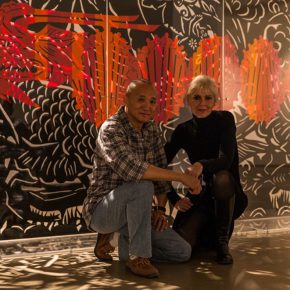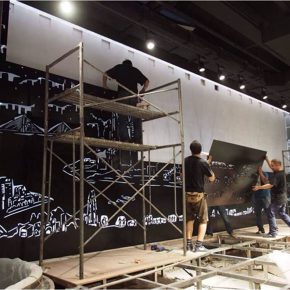
Paper-cut as a worldwide cultural art form, has been spread in many countries among Asia, the Americas and Europe have had their own paper-cut traditions, and some countries are still continuing their paper-cut traditions or are active in modern paper-cut techniques. Although modern paper-cuts are still on the edge of contemporary art, paper-cut is an unique art form that showcases its cultural charm as close to everyday life and ordinary people. Human life needs paper-cuts, which is an indispensable carrier and medium of faith and emotions in daily life and manual labor. Paper-cuts are also an important way for people’s mind to communicate through their hands.
China is the home of the world’s paper-cuts, the earliest paper and the earliest paper-cut occurred in China. In the arid ancient underground tomb in Turpan, Xinjiang, the archaeological team discovered funeral paper-cut pieces during the Northern and Southern Dynasties of 1500 years ago. In Chinese multi-ethnic villages, there are more than 30 ethnic groups maintaining the traditions of paper-cut customs. Chinese paper-cuts were selected by the List of World Intangible Cultural Heritage in 2009, together with Chinese calligraphy, Chinese seal cutting, Chinese woodblock printing technology, and Chinese paper-making technology, so that we can see an interrelated civilized form of paper cuts.
I started to encounter the new issue that use Chinese paper-cut can tell the story of the world, when I directed the declaration of the world heritage of the folk paper-cut project in this new century. In 2004, the Norwegian Ibsen Theater invited me to use paper-cuts to create original drawings of the stage art of the modern dance drama “Looking for Nora”, I accepted the invitation and completed the cooperation over two years. In 2006 the modern dance drama “Looking for Nora” successfully premiered in the Beijing International Dance Festival. In the following decade, I continuously created thematic paper-cut cooperations with different national cultural heritages. Paper-cuts are a minimalist practice of mind and hand, and the best way to open the mind and body, to emancipate thoughts. The simplicity and limitation of the paper-cut language provides more opportunities and possibilities to enrich and change the language of expression.
Every person will meet an unexpected thing in his/her life, some people are aware of it and seize it, while some people might be helpless or miss it or even give it up. Even if you grasp the thing, it does not mean you control the destiny, because everything is not isolated, it is associated with many things in the existence of ontological life, and it is a fact that it exists in its own time and space. When I discovered the folk paper-cuts and started the original paper-cut creation in 1984, I thought I grabbed the thing I really loved. The thinking mode of paper-cuts that creates things through the unity of hand and mind also helped me to find a new continent of folk art, and I found my own “folk”. In the “85 New Wave”, I took the oil painting “Cornfield" and my modern paper-cut creation to begin the modern path based on the folk art.
I use Chinese paper-cuts to tell stories about the world so as to allow the world to have a better understanding of Chinese paper-cuts and the rural women’s life fate and cultural contribution behind paper-cuts. In ancient traditional Chinese life, Chinese characters and the writing traditions of brush strokes shaped the cultural view of the literati elite, while the actions of the scissors and paper-cuts affected the artistic tradition of the rural women’s handmade creations. What my art practice has to do is to associate the traditional language of paper-cut with the current cultural narrative, so that the “empty basket” of the paper-cut will carry new themes and functions, to stimulate new energy and artistic expression.
Paper-cuts are the pronouns of a thing, in the practice of cutting, there is a requirement for tools and materials, and the lineage of methods and taboos. Paper is a civilized material and independent carrier and medium of culture and art. Cutting and paper are integrated into an open world, not only does the pattern create a sense and aesthetic, but also the paper itself carries the culture and expression. Expression itself also creates new problems. The concept of scissors and paper allows us to discover more potential expressive possibilities for paper-cuts and diverse spatial presentations. Therefore, both the paper-cut teaching in the academy, and the juvenile’s paper-cut study on intangible culture heritage, as well as the interactive practices in the overseas promotion of paper-cut exhibitions, all advocate the value of paper-cut learning on individual development. Using the paper-cut narrative to express the mind, the use of paper-cuts to tell their own stories, to tell the stories of the world. In simple terms and flat paper, the confrontation and integration of tradition and contemporary art has begun, history develops in the dual world that is mutually promotional and constraining.
Translated by Chen Peihua and edited by Sue/CAFA ART INFO
































































